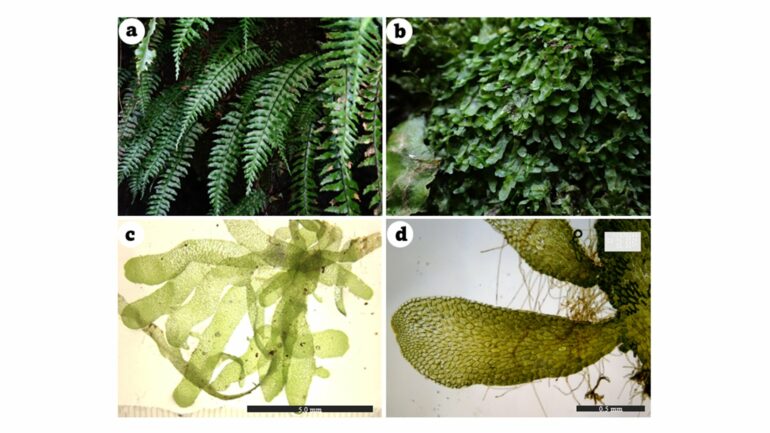Researchers from Tokyo Metropolitan University have discovered that the fern Hymenasplenium murakami-hatanakae can become independent gametophytes, i.e., live for long periods without a spore-producing sporophyte. The work is published in the Journal of Plant Research.
They collected specimens from Izu-Oshima Island, Japan, and used DNA analysis to show that this Aspleniineae fern, a suborder encompassing 30% of ferns on the planet, was part of this rare class. Studying the species further promises to reveal more about how ferns diversify and adapt.
The “alternation of generations” in plants and algae is the intricate cycle by which they reproduce. Each species has two “generations” within the cycle; sporophytes, which have two sets of chromosomes (diploid), and gametophytes, which have only one (haploid).
As gametophytes reach maturity, they produce gametes which fuse together to produce a diploid zygote (a “fertilized egg” cell). Zygotes continue to divide and eventually become sporophytes. Sporophytes produce spores through a process that halves the number of chromosomes; these divide and develop into gametophytes, and the cycle continues.
For most plants on land, sporophytes and gametophytes usually depend on each other for nutrition. Ferns, on the other hand, hold a special place in plant biology in that they do not. This gives rise to the interesting possibility that sporophytes and gametophytes exist for long periods of time in the absence of the other.
While it is known that ferns spend most of their lives as sporophytes, it has been found that a few may exist as gametophytes for extended periods of time in the complete absence of sporophytes, as “independent gametophytes.” But due to their relative rarity, the life cycle of independent gametophytes remains poorly understood.
Inspired by promising preliminary work, a team of researchers led by Professor Noriaki Murakami from Tokyo Metropolitan University set their eyes on Hymenasplenium murakami-hatanakae, a member of the family Aspleniaceae. The species has been found growing in dark, damp environments on rocks beside rivers in warmer climates in Japan and Taiwan.
The team collected specimens on Izu-Oshima Island, 300km south of Tokyo, and used a technique known as DNA barcoding to identify different species.
They compared DNA extracted from chloroplasts to identify sporophytes and gametophytes. Much to their surprise, they discovered that gametophytes of this species could exist for long periods of time in environments which were completely isolated from spores: the data revealed that they had discovered a new independent gametophyte.
The family Aspleniaceae is part of the Aspleniineae suborder, which covers approximately thirty percent of all ferns on the planet: the team’s discovery is a first not only for the family, but the suborder as well. Prevailing wisdom was clear in that Aspleniineae spend most of their life on land as sporophytes; it seemed that gametophytes on Izu-Oshima Island were able to adapt to their rocky, isolated environment.
Not only does this shed light on the evolution of gametophytes, important questions arise about what this might mean for plant ecology. The team hope to accumulate more knowledge on the species and understand how a wider range of fern species diversify and fill environmental niches.
More information:
Katsuhiro Yoneoka et al, Morphological and functional evolution of gametophytes in epilithic Hymenasplenium murakami-hatanakae (Aspleniaceae): The fifth family capable of producing the independent gametophytes, Journal of Plant Research (2024). DOI: 10.1007/s10265-024-01553-0
Provided by
Tokyo Metropolitan University
Citation:
Fern becomes first in suborder to be classed as ‘independent gametophyte’ (2024, August 12)



